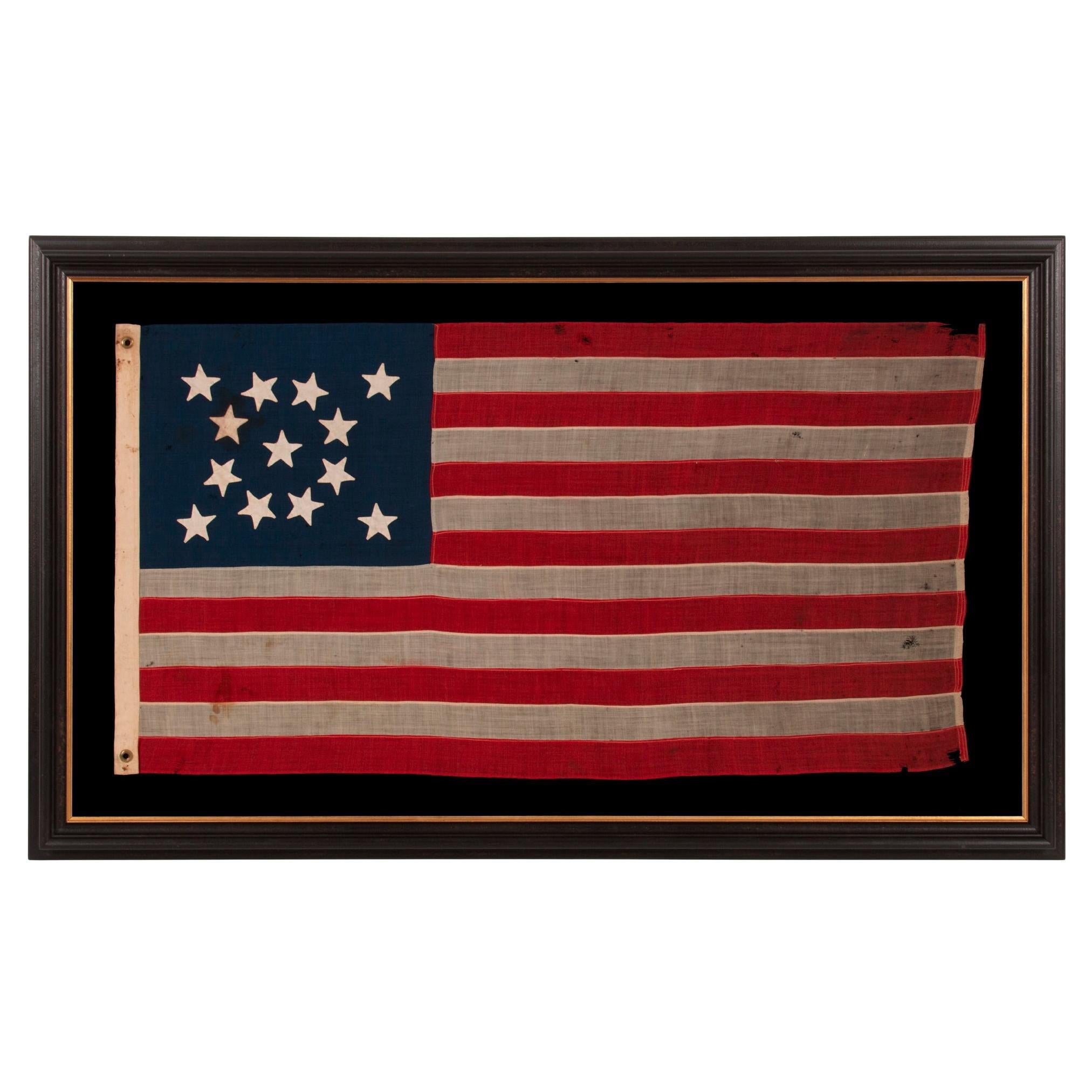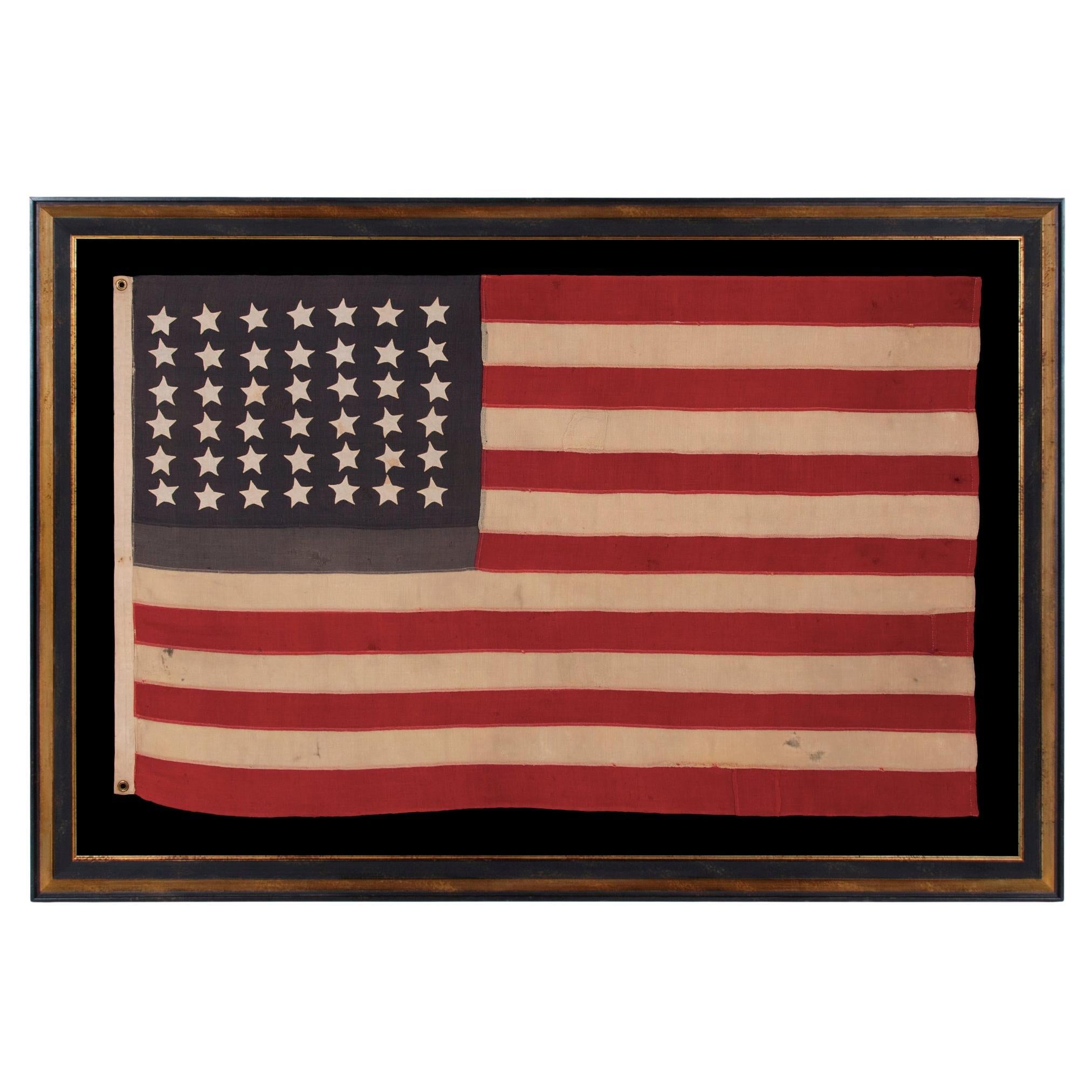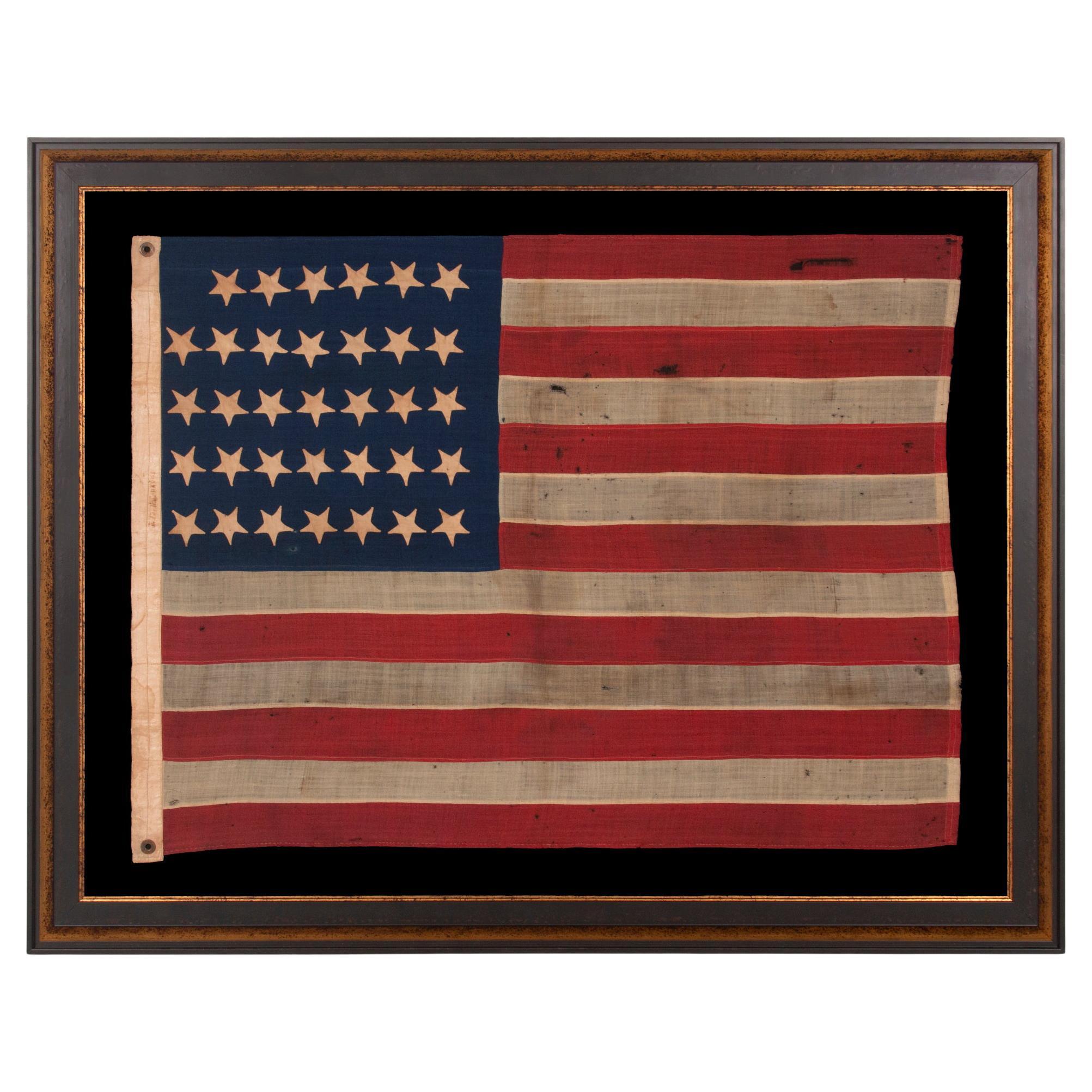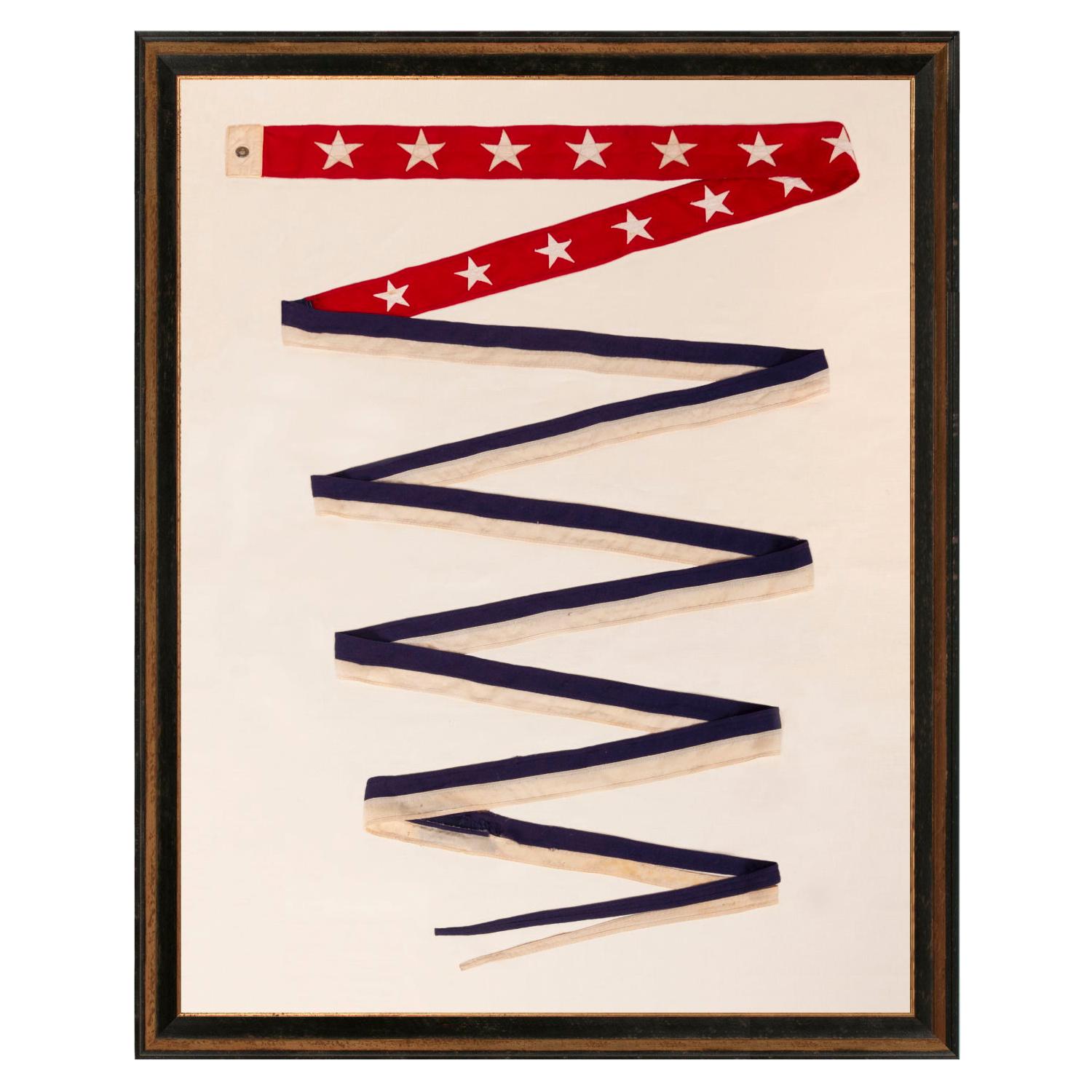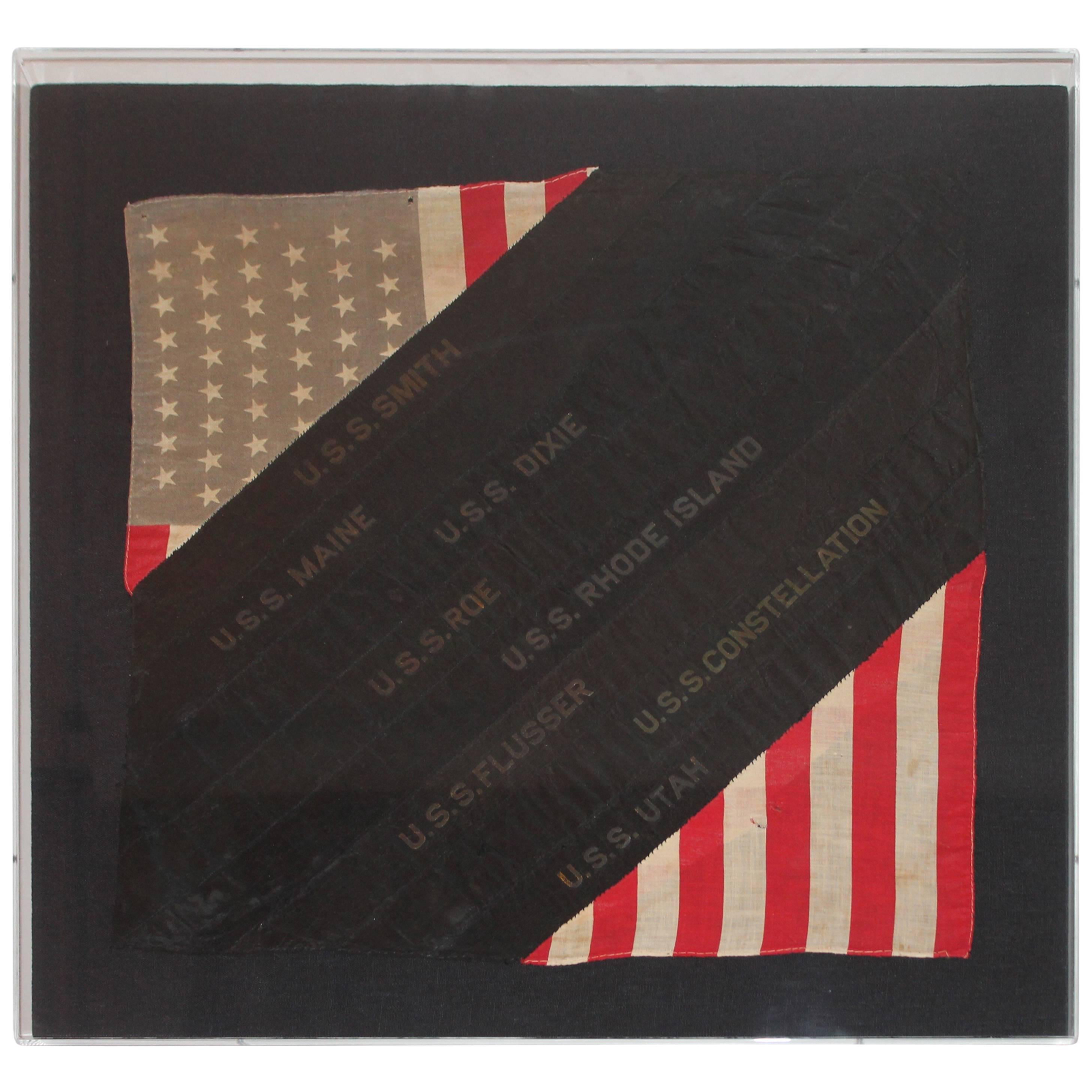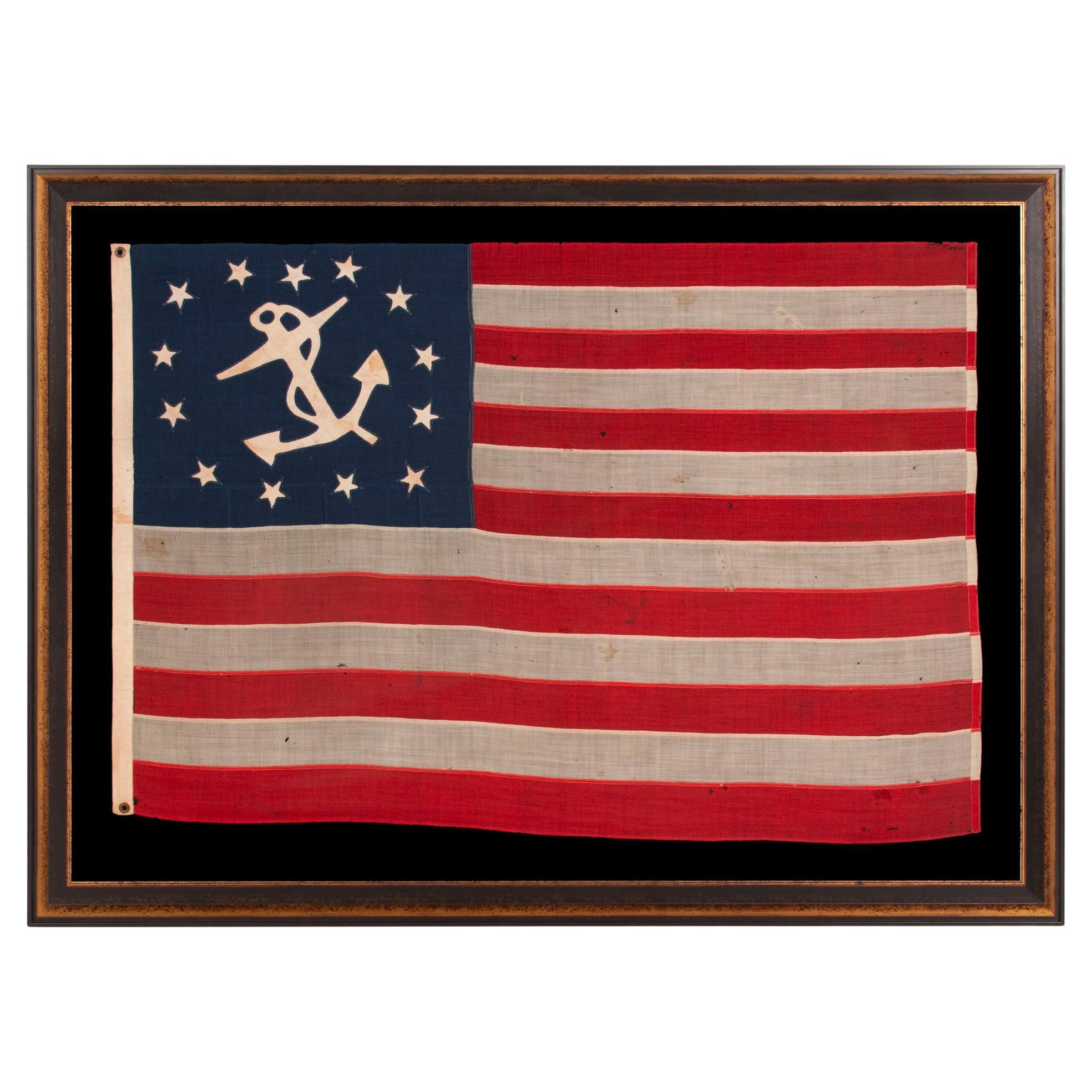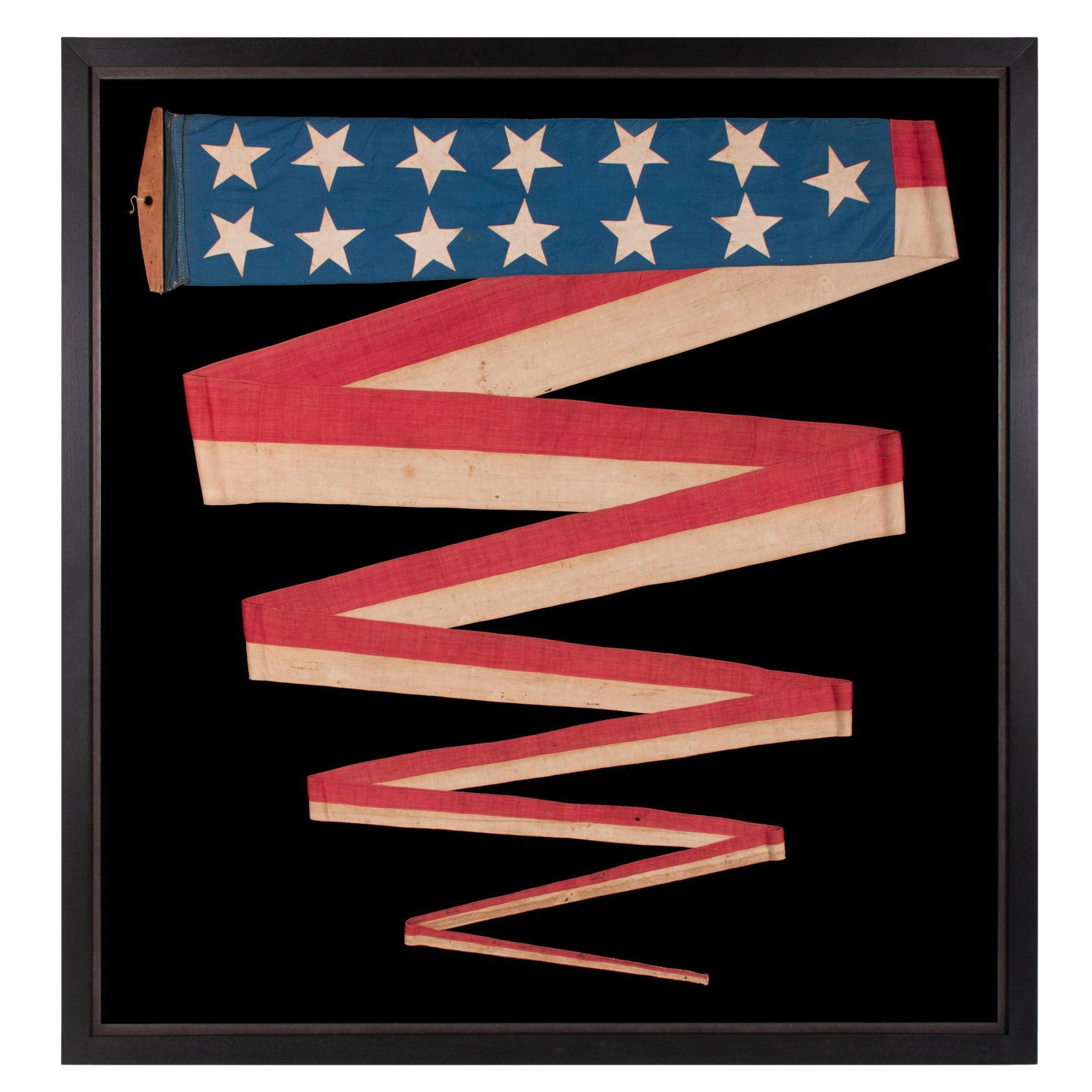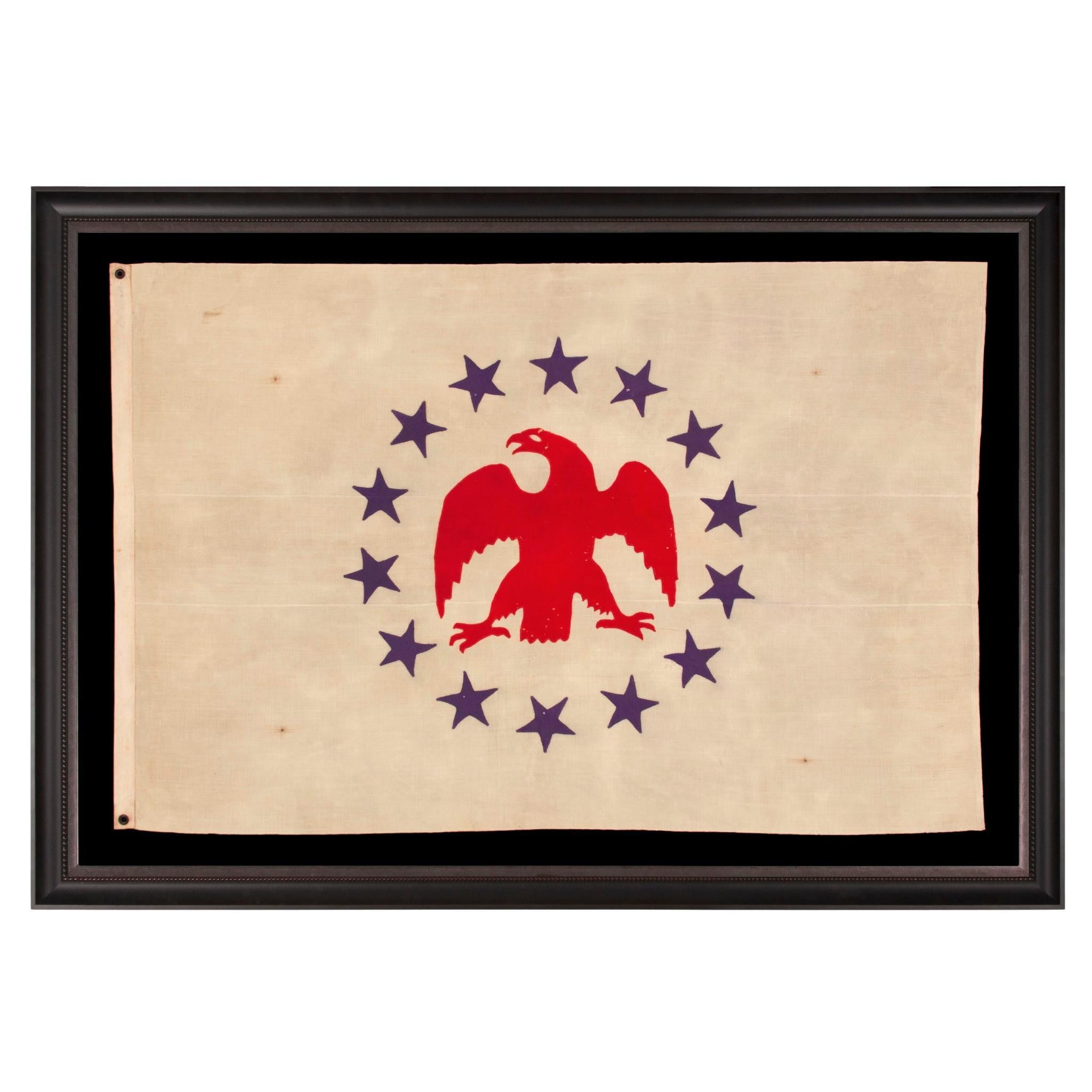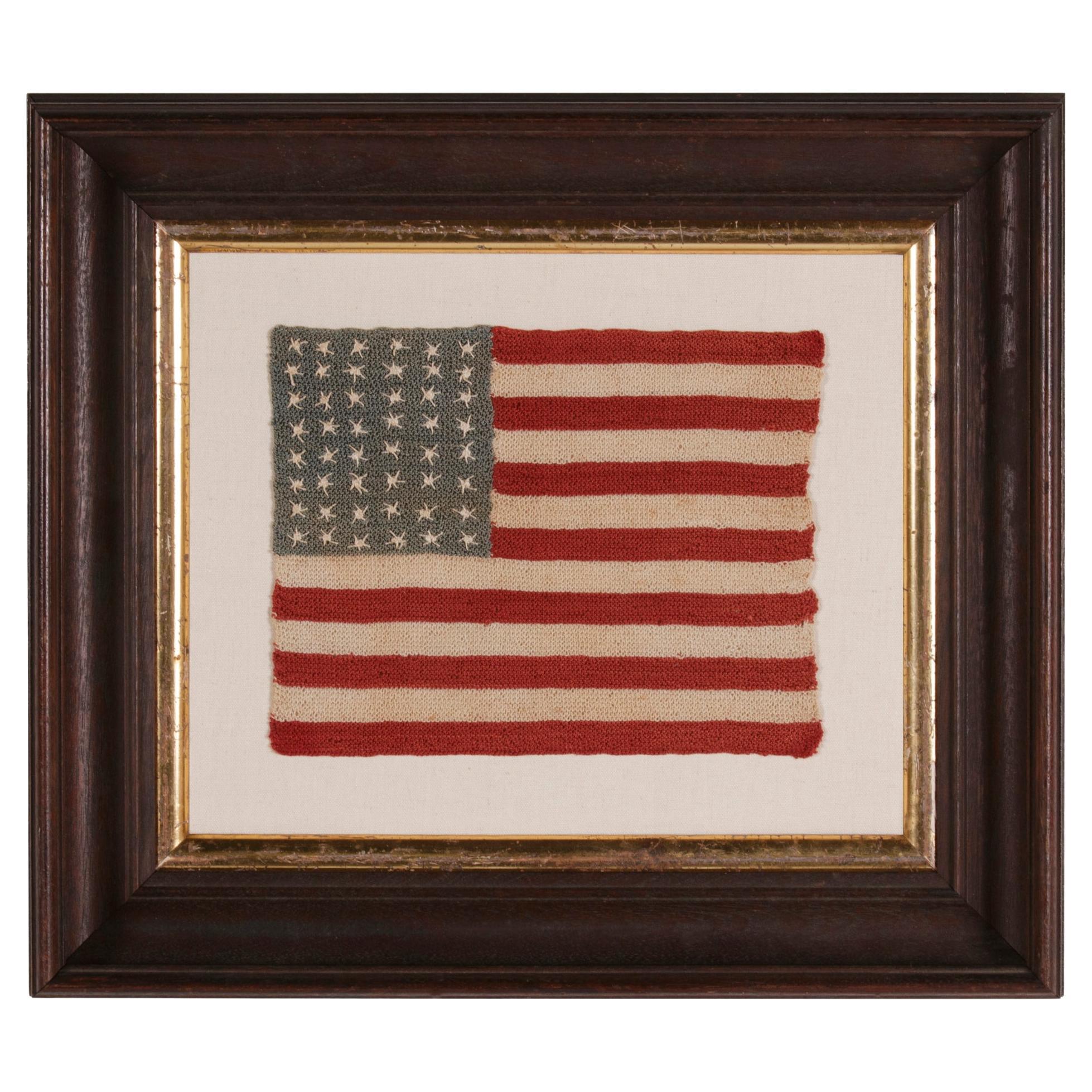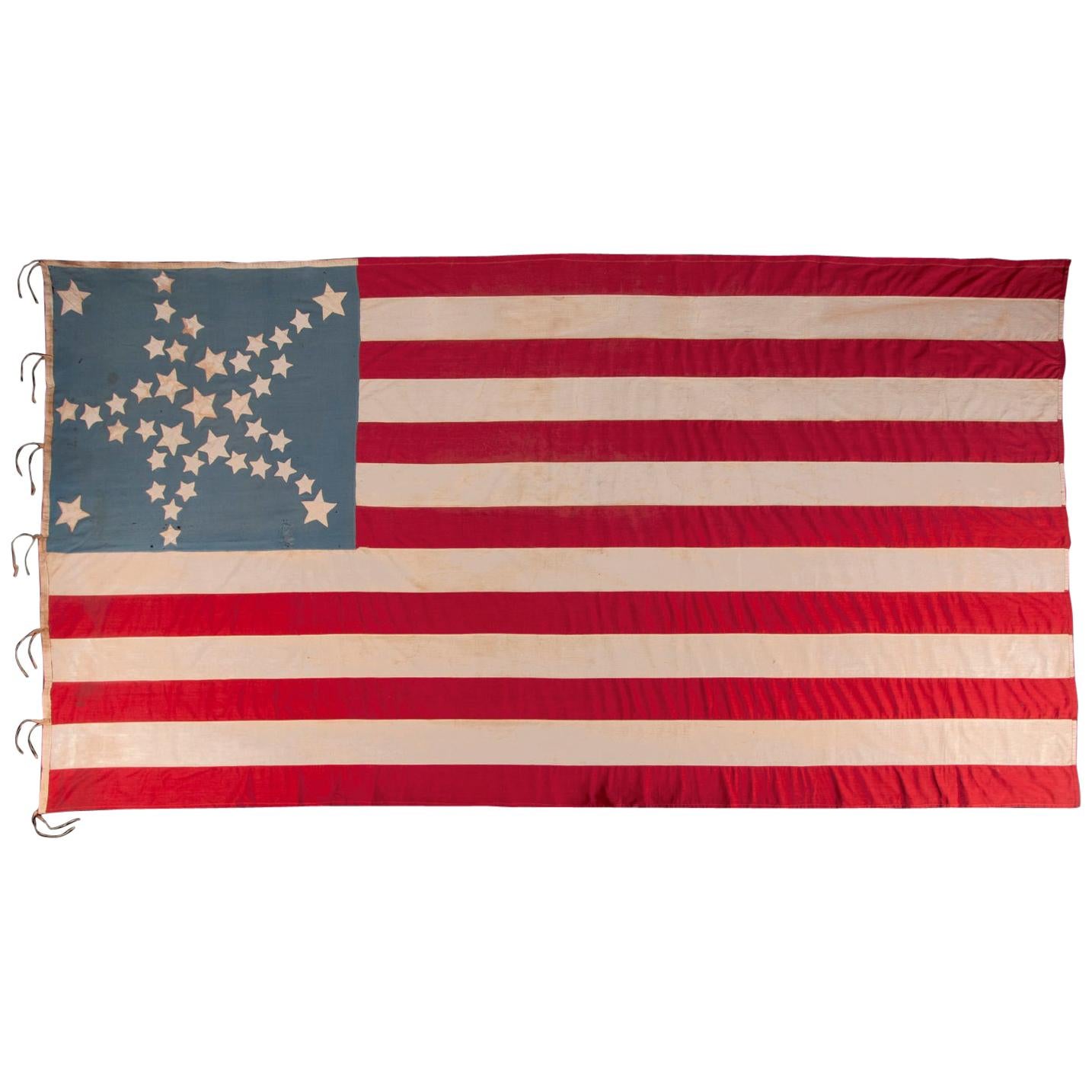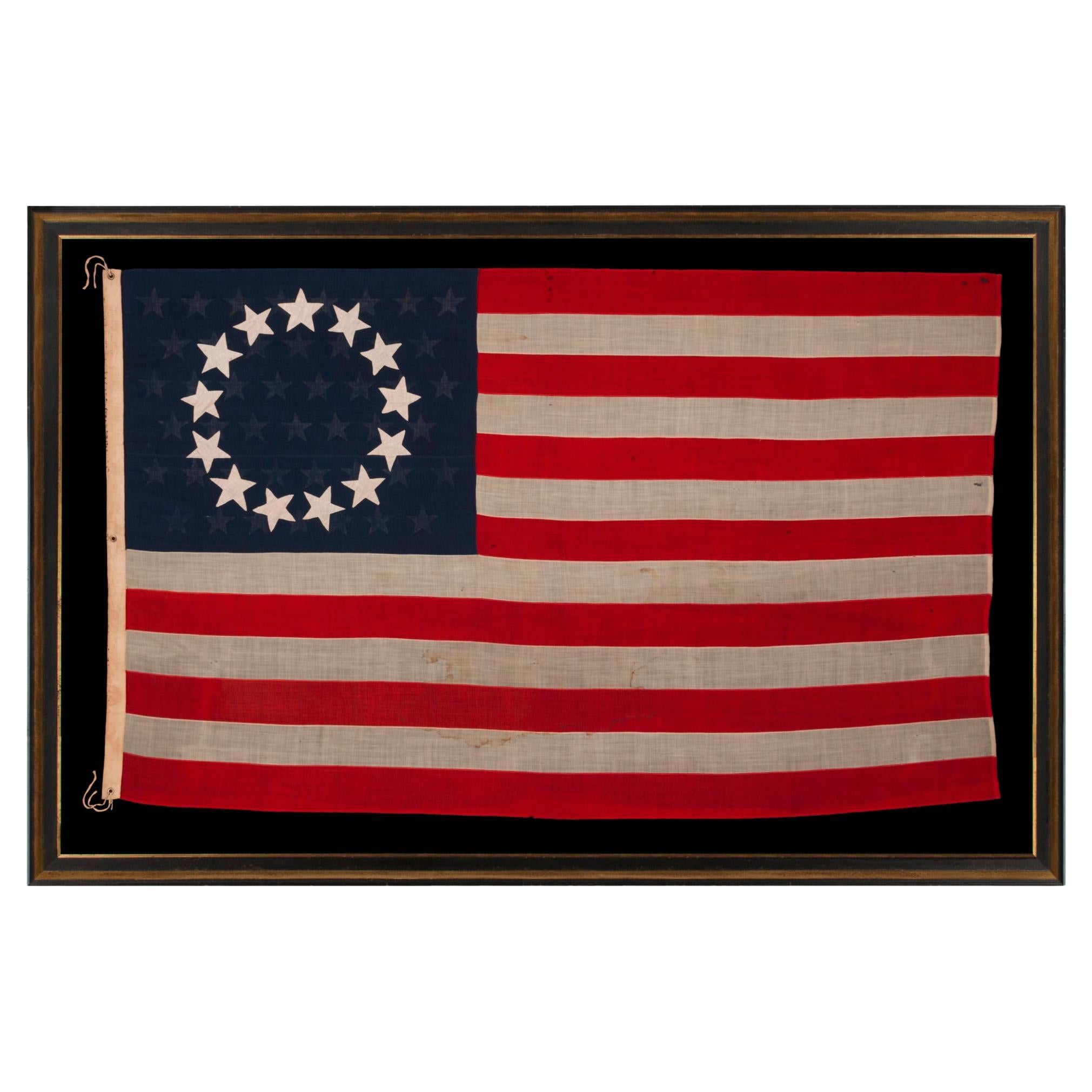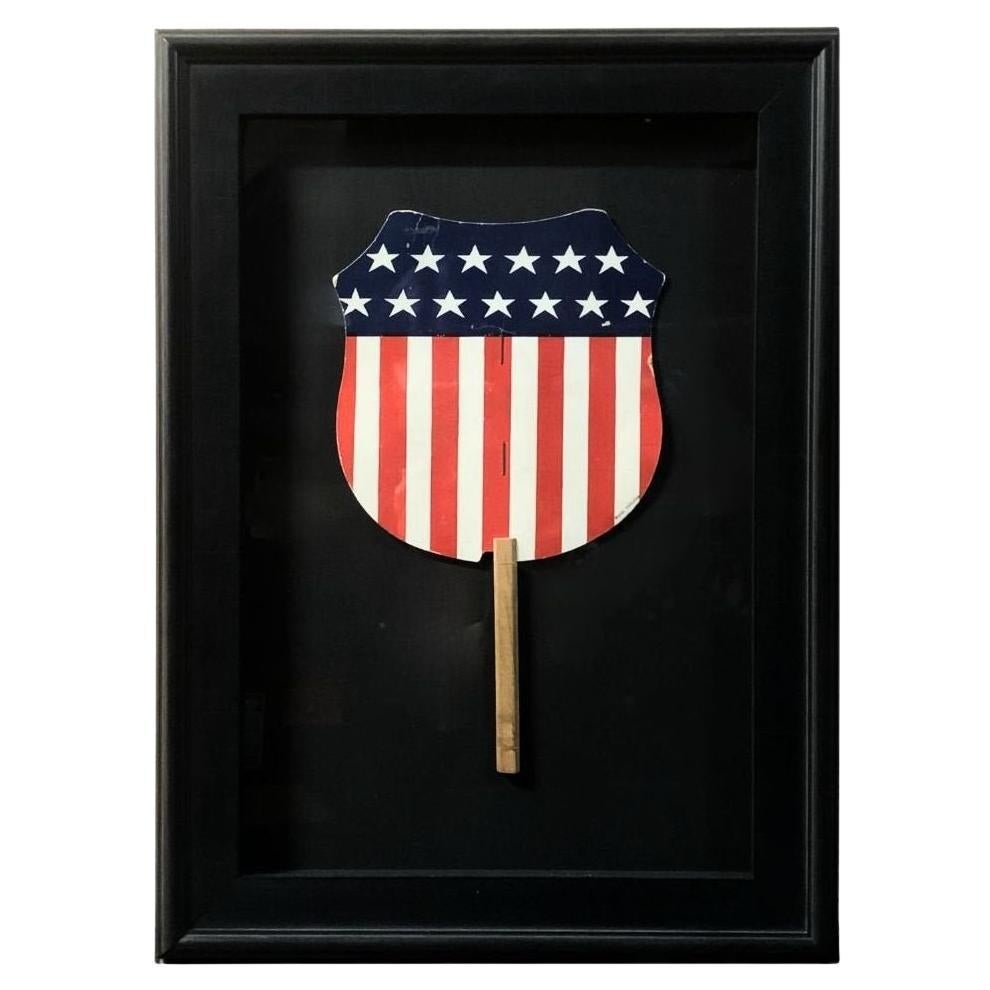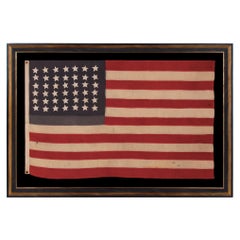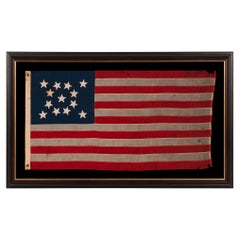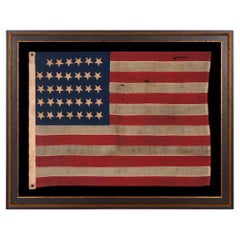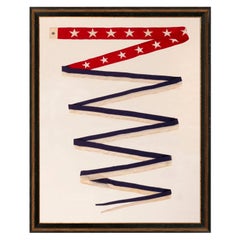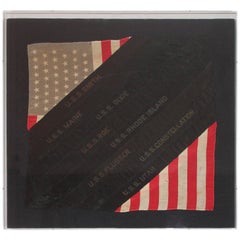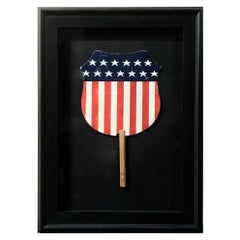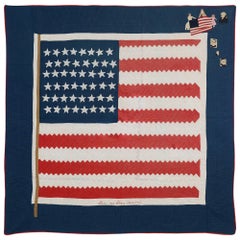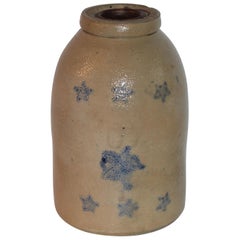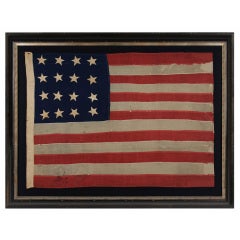
16 Stars, Entirely Hand-sewn, A U.S. Navy Small Boat Ensign
View Similar Items
Want more images or videos?
Request additional images or videos from the seller
1 of 6
16 Stars, Entirely Hand-sewn, A U.S. Navy Small Boat Ensign
About the Item
- Place of Origin:
- Period:
- Date of Manufacture:1850-1861
- Condition:See Item Description.
- Seller Location:York County, PA
- Reference Number:Seller: 16j-8031stDibs: U1206118497578
About the Seller
5.0
Recognized Seller
These prestigious sellers are industry leaders and represent the highest echelon for item quality and design.
Established in 1991
1stDibs seller since 2008
69 sales on 1stDibs
Typical response time: 17 hours
Authenticity Guarantee
In the unlikely event there’s an issue with an item’s authenticity, contact us within 1 year for a full refund. DetailsMoney-Back Guarantee
If your item is not as described, is damaged in transit, or does not arrive, contact us within 7 days for a full refund. Details24-Hour Cancellation
You have a 24-hour grace period in which to reconsider your purchase, with no questions asked.Vetted Professional Sellers
Our world-class sellers must adhere to strict standards for service and quality, maintaining the integrity of our listings.Price-Match Guarantee
If you find that a seller listed the same item for a lower price elsewhere, we’ll match it.Trusted Global Delivery
Our best-in-class carrier network provides specialized shipping options worldwide, including custom delivery.More From This Seller
View All42 Hand Sewn Stars on An Antique American Flag ca 1889-1890
Located in York County, PA
42 HAND-SEWN STARS ON AN ANTIQUE AMERICAN FLAG WITH A TWO-TONE, DUSTY BLUE CANTON, REFLECTS THE ADDITION OF WASHINGTON STATE, MONTANA, AND THE DAKOTAS, NEVER AN OFFICIAL STAR COUNT, ...
Category
Antique Late 19th Century American Political and Patriotic Memorabilia
Materials
Wool
Price Upon Request
13 Star Antique American Flag , Hand-Sewn Stars in a Medallion, 1876 Centennial
Located in York County, PA
13 STAR ANTIQUE AMERICAN FLAG WITH A MEDALLION CONFIGURATION OF HAND-SEWN STARS AND A BEAUTIFUL, ELONGATED PROFILE, MADE IN THE ERA OF THE 1876 CENTENNIAL OF AMERICAN INDEPENDENCE, I...
Category
Antique 1870s Political and Patriotic Memorabilia
Materials
Wool
34 Star Flag with Upside down Hand Sewn Stars, Kansas Statehood, circa 1861-1863
Located in York County, PA
34 Upside-down, Hand-sewn Stars In A Notched Configuration, On An Antique American Flag Of The Civil War Period, With A Beautiful And Highly Unusual Jacquard Weave Binding, And In A Tiny Scale Among Its Counterparts, Reflects The Addition Of Kansas As The 34th State, 1861-1863
34 star American national flag with a number of interesting and desirable features. Chief among these is the scale of the flag among counterparts of the period. At just three by four feet, its size is absolutely tiny among those with pieced-and-sewn construction. During the 19th century, sewn flags (as opposed to those that were printed on cloth) were typically eight feet long and larger. This is because they were important in their function as signals, meaning that they needed to be seen and recognized from great distance. A flag that was six feet in length was considered small and production of flags smaller than this was extremely limited. Even infantry battle flags, carried on foot, were approximately six by six and-one-half feet, about the size of an average quilt of the same period. It wasn't until the 1890’s that manufacturers began to produce smaller sewn flags in great quantity.
The stars of the flag are arranged in justified lineal rows, the first of which contains one fewer star. This results in what I call a “notched” design, leaving one space open for the addition of another star. The blank space leaves little doubt that the maker of the flag assumed that another Western Territory would soon acquire statehood, or that West Virginia might soon break free from Virginia, which occurred in June of 1863.
Note how the stars are oriented so that they are upside-down on their vertical axis, with two points up instead of one. No one knows if this positioning bore any particular meaning. Both modern notions of the correct orientation of a star, and the present official design of the American flag, dictate that the stars are supposed to have one point up. Since there was no official design for the flag until 1912, however, it may simply be that the maker of the flag did not consider any particular position to be right-side-up or upside-down. In the mid-19th century, it was not uncommon to see stars pointing any which way, varied throughout whatever arrangement was chosen. Whatever the case may be, the feature present on this particular flag is unusual to the eye and notable in terms of its presentation.
Made of cotton, the stars are hand-sewn and double-appliquéd (applied to both sides). The canton and stripes of the flag are made of wool bunting. Because blue wool bunting generally came in a width of 18", the canton was pieced from two lengths of fabric, joined by hand-stitching. The canton is joined to the striped field by hand-stitching. The stripes are pieced and hemmed by treadle stitching.
Made of heavy, polished, jacquard weave linen, the binding of the flag is both exceptional from a textile connoisseur’s perspective and highly unusual. This is joined to the flag by treadle stitching. There are two brass grommets, one each at the top and bottom of the hoist, which are likewise especially unusual, in that they are both heavier than normal and intentionally hammered flat. I have seen this on only one other occasion in a Civil War flag...
Category
Antique Late 19th Century American Political and Patriotic Memorabilia
Materials
Wool
U.S War Department Commissioning Pennant with 13 Stars
Located in York County, PA
EXTREMELY RARE U.S. WAR DEPARTMENT COMMISSIONING PENNANT WITH 13 STARS, A REVERSAL OF THE U.S. NAVY COLOR SCHEME, TWENTY-FOUR FEET ON THE FLY, SP...
Category
20th Century American Political and Patriotic Memorabilia
Materials
Wool
Price Upon Request
Outstanding 13 Star Hand-sewn American Private Yacht Flag, ca 1865-1885
Located in York County, PA
OUTSTANDING, 13 STAR, ANTIQUE AMERICAN PRIVATE YACHT ENSIGN WITH GREAT FOLK QUALITIES THAT INCLUDE AN UNUSUALLY WIDE ANCHOR AND A DECIDEDLY LOPSIDED RING OF 13 STARS; MADE DURING THE 2ND HALF OF THE 19TH CENTURY; ITS DEVICE HAND-SEWN AND SINGLE-APPLIQUÉD
Private yacht ensigns were approved American signals for maritime use that allowed pleasure boats to bypass customs. Though the legislation that approved them was adopted prior to 1850, almost all such flags that one will encounter were sewn by electric machine and made during the 20th century. The unusual gems among surviving examples are those that are earlier and include hand-sewn elements. Even more rare are a select few with atypical graphics. Barely any fall into both of these categories at once. Take note of the anchor on this particular flag, wide a long horizontal crossbar (stock) that contributes to uncommonly wide stance. Set within a ring of stars that is decidedly lopsided, the result is as bold as it is endearingly whimsical—two of the best qualities in American folk art, a category in which this particular example can be filed. While I have owned 13 star private yacht flags that have displayed star and canted anchor devices that were somewhat larger and/or bolder than typical, I cannot recall any that were so graphically intriguing as this one.
Brief History of Private Yacht Ensigns:
The medallion configuration, 13-star, 13-stripe flag, with a canted center anchor was entered into official use in 1848, following an act of Congress, that made it the official signal for U.S. pleasure sailing vessels. The need for such a flag arose with the popularity of boating as a pastime for well-to-do Americans, and as a competitive sport, in addition to its longstanding utilitarian role as a vehicle of trade. In early America, all boats were subject to customs searches at every port. Without modern income tax, the federal government derived its revenues mostly from tariffs, so an accounting of foreign goods on ships was a critical venture. As yachting for pleasure became more prevalent, however, more and more time was spent searching boats that had no such inventory, wasting time for both customs officials and wealthy ship owners.
John Cox Stevens, a former president of the Jockey Club and future founder of the Union League Club, became the New York Yacht Club’s Commodore upon its founding in 1845. In 1847 he approached the secretary of the treasury and suggested that something be done to streamline the customs process for non-trade vessels. In 1848, legislation passed Congress requiring registration of these boats, which could then fly the “American Yachting Signal” to bypass customs. This remained on the books until the 1980’s, when the 1848 legislation was revoked, but the use of flags in this design for decorative function continues to this day.
13 star flags have been flown throughout our nation’s history for a variety of purposes. In addition to their use on private yachts, they were hoisted at patriotic events, including Lafayette’s final visit in 1824-25, the celebration of the nation’s centennial in 1876, and the sesquicentennial in 1926. They were displayed during the Civil War, to reference past struggles for American liberty and victory over oppression, and were used by 19th century politicians while campaigning for the same reason. The U.S. Navy used the 13 star count on small boats until 1916, because it was easier to discern fewer stars at a distance on a small flag. Commercial flag-makers mirrored this practice and some private ships flew 13 star flags during the same period as the Navy.
Construction: The stars and anchor are made of cotton, hand-sewn, and single-appliquéd. This means that they were applied to one side of the canton, then the blue fabric was cut from behind each star, folded over, and under-hemmed, so that one star could be viewed on both sides of the flag. I always find single-appliquéd stars more interesting, not only because they are evidence of a more difficult level of seam-work and stitching, but also because they are more visually intriguing. The two visible rows of hand-stitching emphasize their hand-sewn construction. For these reasons, single-appliquéd stars often appeal to connoisseurs of early American textiles...
Category
Antique Mid-19th Century American Political and Patriotic Memorabilia
Materials
Wool
Price Upon Request
Hand-Sewn 13 Star Cornflower Blue 32 Foot Commission Pennant circa 1845-1865
Located in York County, PA
ENTIRELY HAND-SEWN, 32-FOOT, SHIP’S COMMISSION PENNANT OF THE 1845-1865 ERA, A HOMEMADE, COTTON EXAMPLE, WITH 13 STARS ON A CORNFLOWER BLUE CANTON, IN A BEAUTIFUL STATE OF PRESERVATION
Commission pennants are the distinguishing mark of a commissioned U.S. Navy ship. A ship becomes commissioned when the pennant is hoisted. Flown during both times of peace and war, the only time it is not flown is if a flag officer or civilian official is aboard and replaces it with their own flag. Flown at the topmast, this would be the first thing one would see coming over the horizon and identified the vessel as a warship.
Sometimes the owners of private ships mimicked the use of Navy signals. Some seafaring men would have served in the Navy and become privy to various practices in that capacity. Others flew them purely for stylistic reasons, either on a regular basis or while the boat was dressed for special occasion. Hudson River steamers regularly flew pennants of this nature, as evidenced by period photography as well as the paintings of artists such as John and James Bard...
Category
Antique Mid-19th Century American Political and Patriotic Memorabilia
Materials
Cotton
You May Also Like
Framed Hand Sewn Patriotic Sham Made from a Flag and Ship Ribbons
Located in Los Angeles, CA
This Great framed Folk Art sham with 48star flag and ship ribbons is a great patriotic item. The top left corner as well as the bottom right corner are scraps of a 48 star linen flag and in between them are ribbons of ships names that are sewn together in a collage. The American ships span three centuries of ships ribbons, from late 19th century to present day ships. As well as the "USS Utah" which was sunk during the attack on Pearl Harbor.
This great and proud sham is not only a great American item but is a Symbol of hope and unity throughout the ages. Serves better as a hanging Folk Art...
Category
20th Century American Folk Art Political and Patriotic Memorabilia
Materials
Plexiglass
$1,356 Sale Price
20% Off
U.S. Shield Patriotic Printed Paddle Fan, Circa 1918
Located in Colorado Springs, CO
Presented is a U.S. shield patriotic printed paddle fan from 1918. The blue chief is printed with thirteen white stars. Below, thirteen vertical pales are printed in alternating red ...
Category
Vintage 1910s American Political and Patriotic Memorabilia
Materials
Wood, Paper
Patriotic Quilt Titled "Stars and Stripes" Forever
Located in Darnestown, MD
This fabulous 48 star Patriotic quilt has the embroidered title "Stars and Stripes Forever."
The stripes of the flag are created in an unusual way. Rather than using horizontal stri...
Category
Vintage 1920s American Quilts
Materials
Cotton
19thc Stars Decorated Stone Ware Crock / Jug
Located in Los Angeles, CA
This fine salt glazed stoneware jar or storage jar has blue floating stars all over the face of the crock. It is in fine condition with no cracks a few minor chips around the inside ...
Category
Antique 19th Century American Adirondack Political and Patriotic Memorab...
Materials
Pottery
Vintage U.S. WWII Era Boeing PT-17 Stearman Wood Propeller
Located in Chicago, IL
Vintage U.S. WWII Era Boeing PT-17 Stearman Wood Propeller
Decorate your living room, restaurant, hotel or lounge space with this exquisite memorabilia. This wooden propeller is fro...
Category
Early 20th Century Unknown American Craftsman Political and Patriotic Me...
Materials
Wood
Monumental "Valley Forge" American Flag with 48 Stars, c.1940-1950
Located in San Francisco, CA
About
This is an original monumental American flag made by Valley Forge Co. with 48 stars and stripes and brass grommets.
Creator Valley Forge Co.
Date of manufacture c.1940-1950.
...
Category
Early 20th Century Industrial Political and Patriotic Memorabilia
Materials
Brass
